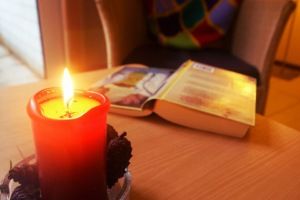News
Hygge hazard: Cosy candlelight a bane to indoor climate
This article is more than 8 years old.
Danish study not so ‘hyggelig’ reading

It’s tough to get your hygge on without a little candle action (photo: Pixabay)
When practising the art of ‘hygge’ in Denmark, it is rather difficult to avoid lighting the odd candle – particularly during the dour winter months.
But perhaps there is something to be said for not waxing lyrical about candlelight cosiness.
A study from the University of Copenhagen has shown that in homes where candles are used an average of 60 percent of the indoor ultrafine particles stemmed from candles.
That in itself might not be necessarily dangerous, according to experts, but it’s probably still best to avoid lighting up candles too often at home.
“We know that particles are hazardous, so the greater the particle concentration we are exposed to, the greater the risk to our health. So as a precautionary measure, it’s a good idea to consider not lighting candles,” said Jørn Toftum, an indoor climate researcher with the Technical University of Denmark (DTU).
READ MORE: Air pollution still a big killer in the capital region
Look to the swan
Whether or not a light source has a high content of soot has a big impact on how many particles the light emits. And according to a report from the environmental agency, Miljøstyrelsen, sooting light sources can emit 30-70 percent more carbon particles than a non-sooting light source.
Typically, the larger candles emit more particles than their smaller counterparts and it is important to air out rooms to reduce the number of particles in the room.
Another tip for reducing the number of particles emitted by candles is keeping the candle wick short and away from drafts. The swan-marked candles are the best candles to have.
Miljøstyrelsen is helping to fund a new project to better understand the particle emission process, which will attempt to develop a type of light source that has less of an impact on the indoor climate.






































